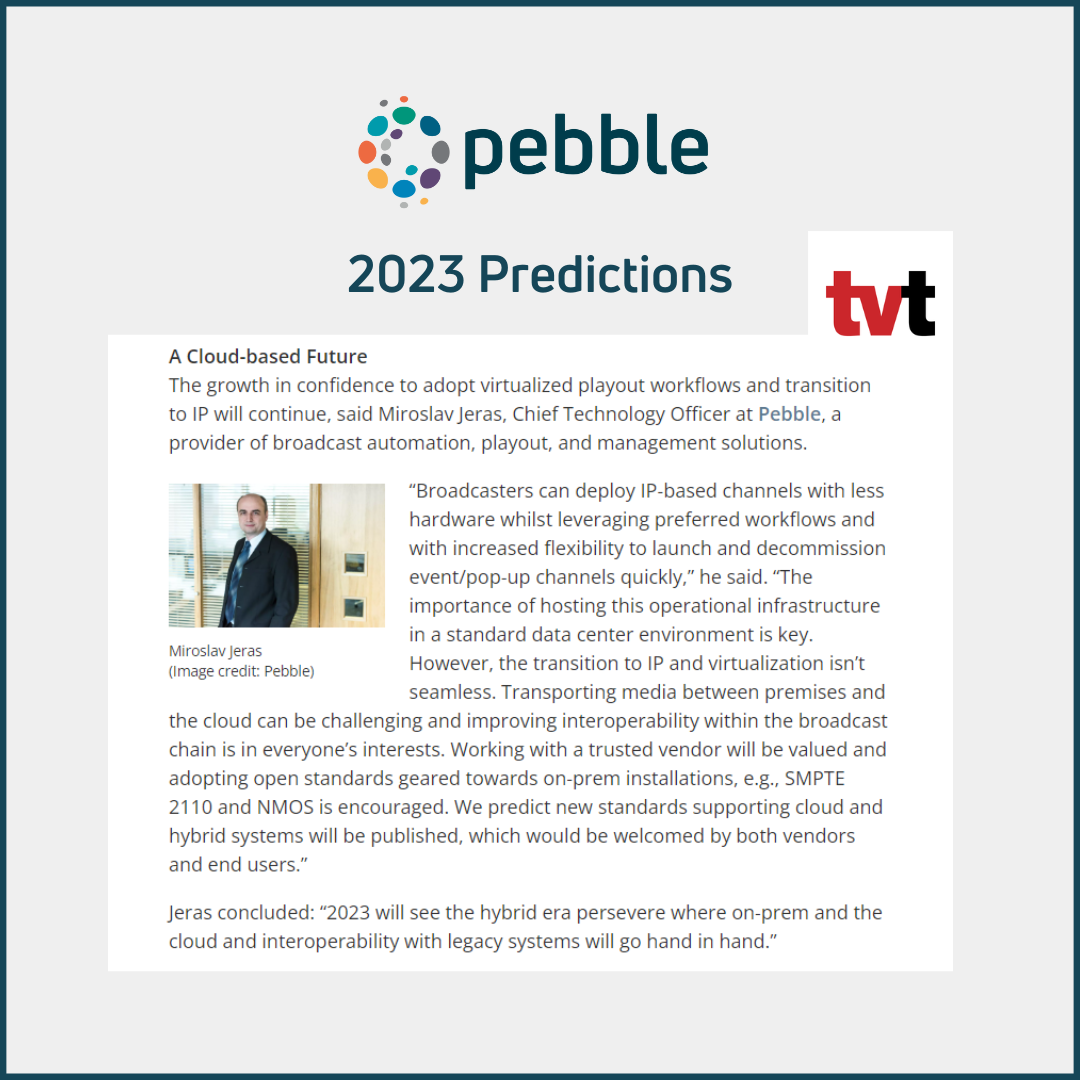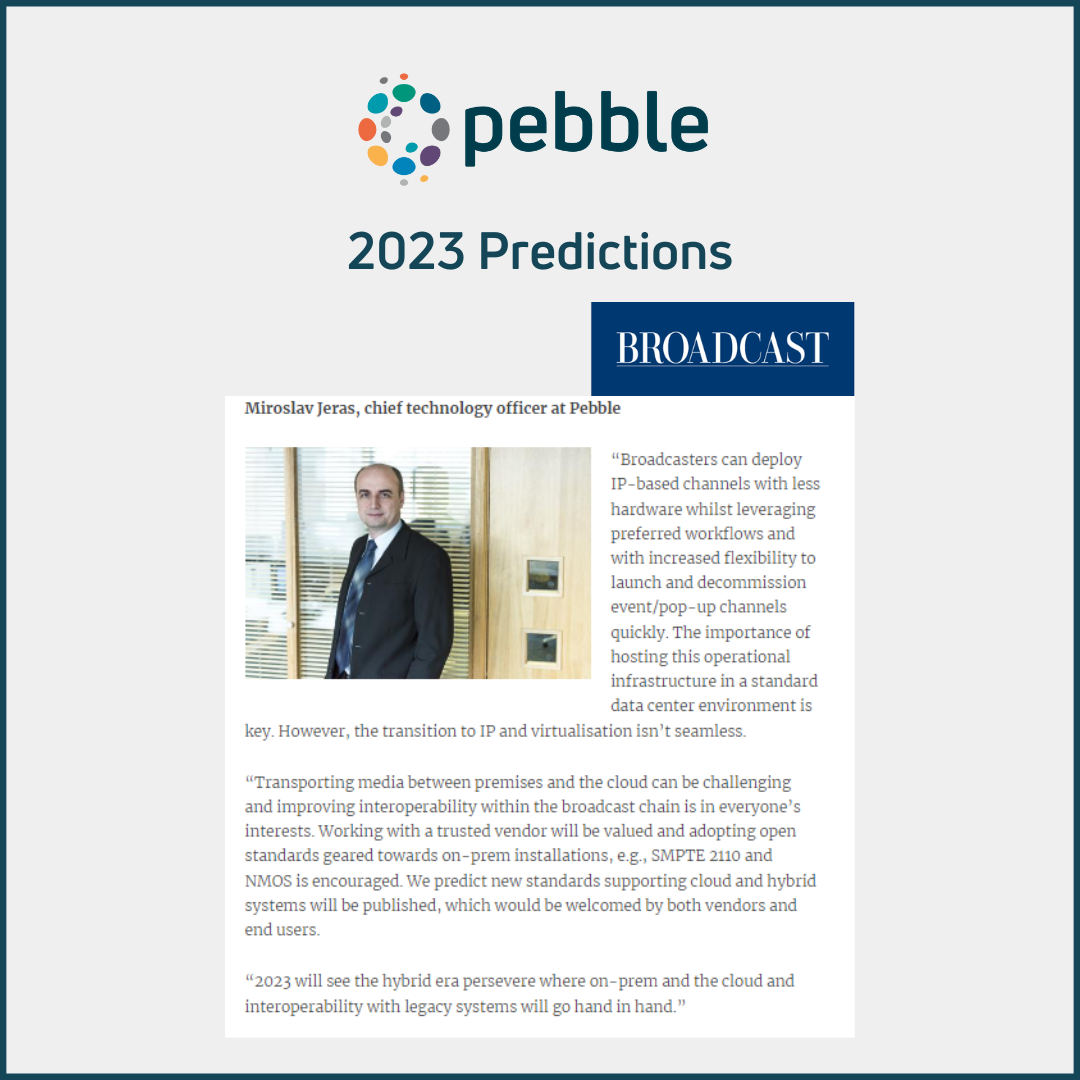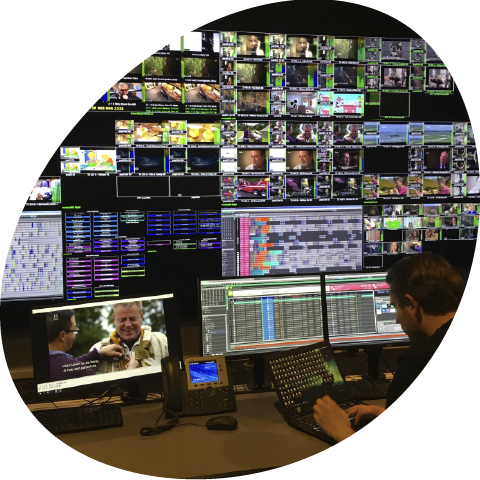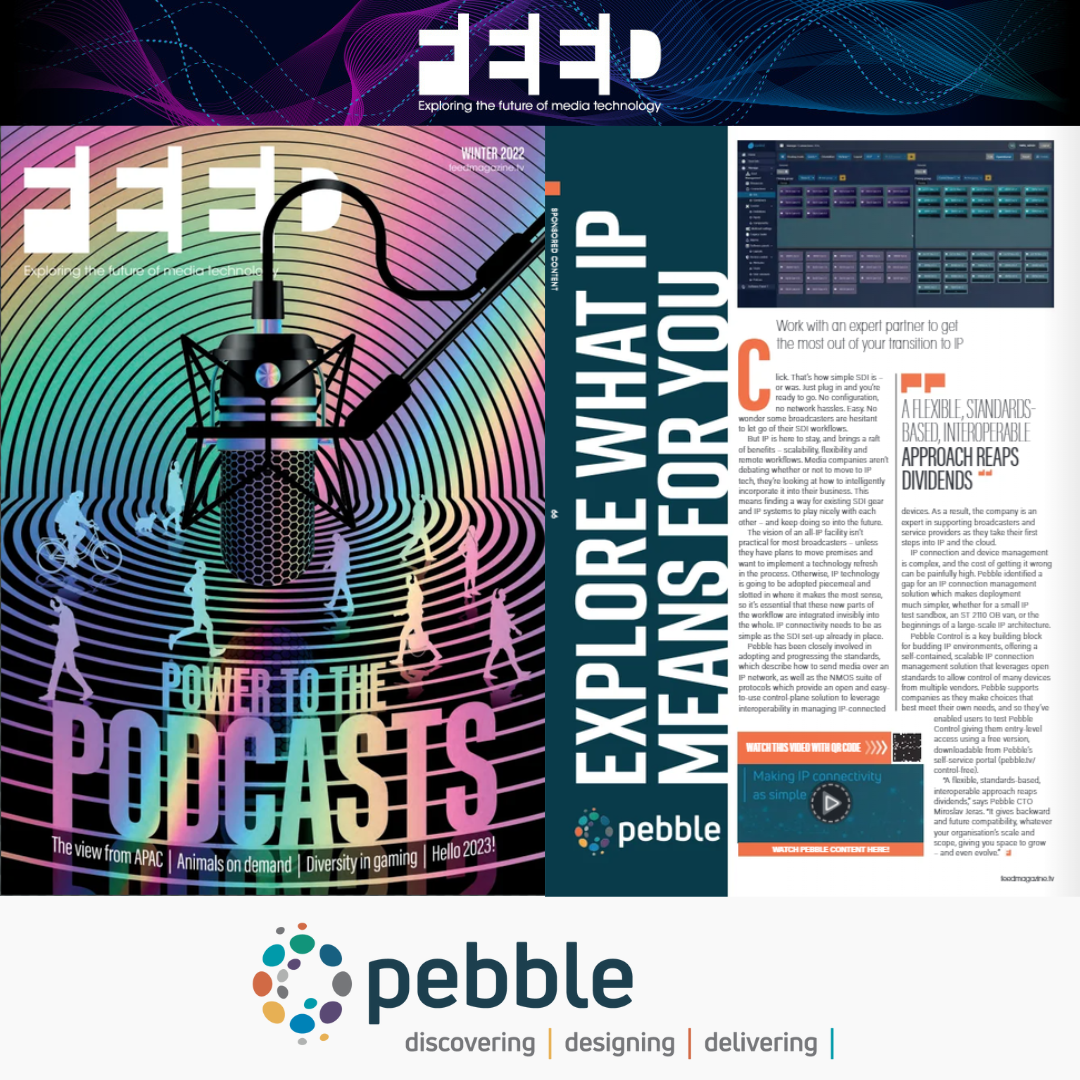Miroslav Jeras, CTO, shares his predictions of 2023 trends within broadcast with TV Technology:
The growth in confidence to adopt virtualized playout workflows and transition to IP will continue, said Miroslav Jeras, Chief Technology Officer at Pebble, a provider of broadcast automation, playout, and management solutions.
“Broadcasters can deploy IP-based channels with less hardware whilst leveraging preferred workflows and with increased flexibility to launch and decommission event/pop-up channels quickly,” he said. “The importance of hosting this operational infrastructure in a standard data center environment is key. However, the transition to IP and virtualization isn’t seamless. Transporting media between premises and the cloud can be challenging and improving interoperability within the broadcast chain is in everyone’s interests. Working with a trusted vendor will be valued and adopting open standards geared towards on-prem installations, e.g., SMPTE 2110 and NMOS is encouraged. We predict new standards supporting cloud and hybrid systems will be published, which would be welcomed by both vendors and end users.”
Jeras concluded: “2023 will see the hybrid era persevere where on-prem and the cloud and interoperability with legacy systems will go hand in hand.”
Read the predictions of industry peers HERE.





